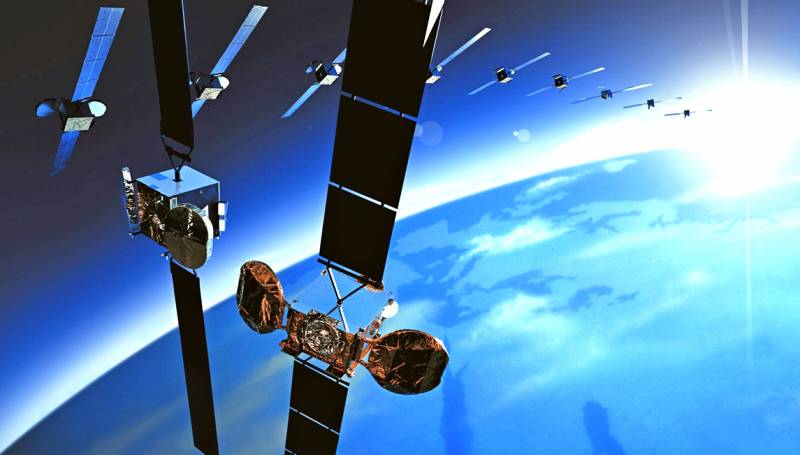Russia will cover the Earth with its "Sphere"
Russia enters the race for the development of near-Earth space. For this purpose, a federal target program has been adopted, which should increase the number of satellites in the Russian orbital constellation by a factor of five. As of 2018, it has 143 space satellites, including civilian satellites and military vehicles.
The head of Roskosmos Dmitry Rogozin believes that the approach to the formation of an orbiting satellite constellation needs to be radically reviewed. Tasks are set for remote sensing of the earth’s surface, as well as for the qualitative improvement of communications throughout the Russian Federation:
Roscosmos will compete with ambitious British and American projects. OneWeb, registered in the United Kingdom, plans to bring about 700 satellites into low Earth orbit, which will have to provide broadband Internet access to all the inhabitants of the Earth, including in remote areas. Famous companies such as the Virgin Group, The Coca-Cola Company, Airbus Group and many others acted as co-investors of the project. The satellites themselves will be made in France by Airbus Defense and Space. It is interesting that Roscosmos, including from Baikonur and the Vostochny Cosmodrome, will put the British orbital group into orbit.
The American billionaire Elon Musk also swung to create his own near-Earth satellite system with a total of 12000 called Starlink. Unlike British competitors, delivery to the destination devices will be carried out by SpaceX, which belongs to him. In February of this year, the first two satellites were launched in test mode.
The scale of the Russian project looks somewhat more modest. It is assumed that the domestic orbital group will be brought up to 640 units in numbers, it will use micro-processor systems and elements of artificial intelligence. Moreover, the new satellites will be small in size and will begin to be produced in Russia in series. For this, according to Rogozin, it will be necessary to build new factories to create the element base. In addition, the launch will be carried out in whole clusters, which will give work for the promising heavy-class Angara-5 launch vehicle. It is estimated that at least 25 such launches will be needed.
The Russian orbital group will be called the “Sphere”.
The head of Roskosmos Dmitry Rogozin believes that the approach to the formation of an orbiting satellite constellation needs to be radically reviewed. Tasks are set for remote sensing of the earth’s surface, as well as for the qualitative improvement of communications throughout the Russian Federation:
Our country is the largest in territory, there are hard-to-reach spots - you can’t physically accumulate fiber and power lines. Space in Russia will connect the country
Roscosmos will compete with ambitious British and American projects. OneWeb, registered in the United Kingdom, plans to bring about 700 satellites into low Earth orbit, which will have to provide broadband Internet access to all the inhabitants of the Earth, including in remote areas. Famous companies such as the Virgin Group, The Coca-Cola Company, Airbus Group and many others acted as co-investors of the project. The satellites themselves will be made in France by Airbus Defense and Space. It is interesting that Roscosmos, including from Baikonur and the Vostochny Cosmodrome, will put the British orbital group into orbit.
The American billionaire Elon Musk also swung to create his own near-Earth satellite system with a total of 12000 called Starlink. Unlike British competitors, delivery to the destination devices will be carried out by SpaceX, which belongs to him. In February of this year, the first two satellites were launched in test mode.
The scale of the Russian project looks somewhat more modest. It is assumed that the domestic orbital group will be brought up to 640 units in numbers, it will use micro-processor systems and elements of artificial intelligence. Moreover, the new satellites will be small in size and will begin to be produced in Russia in series. For this, according to Rogozin, it will be necessary to build new factories to create the element base. In addition, the launch will be carried out in whole clusters, which will give work for the promising heavy-class Angara-5 launch vehicle. It is estimated that at least 25 such launches will be needed.
The Russian orbital group will be called the “Sphere”.

Information